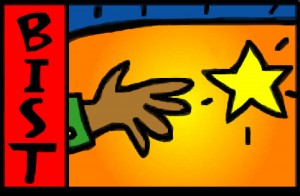Behavior Intervention Support Team(BIST), focuses on protecting and teaching children rather than punishment. We want students to demonstrate good behavior wherever they go, in any situation. We don’t want the children to think the only reason to behave is so they won’t get “in trouble”. We look and react to behavior problems the same way we do learning problems. Just as we expect to teach children how to read, write, count and add, we expect that we will be teach children how to behave at school. Extra practice to help children learn letters or numbers is essential to new learning. We provide extra instruction to practice expected behavior.
There are three life skills we want all children to have:
- I can be o.k. (and do what I am supposed to do) even when I am mad.
- I can be o.k. (and do what I am supposed to do) even when others are not o.k.
- I can be o.k. (and do what I am supposed to do) even when I don’t want to.
The bottom line at Cavett is:
“It is never o.k. to be hurtful or unkind.”
“It is never okay to be disruptive”
Children that continue to misbehave after a reminder, will be asked to go to the safe seat. The safe seat is one of the tools we use to protect and teach students. There are two “official” safe seats but a safe seat can be anywhere the teacher designates—even the front of the line can be a safe “seat” if that is the safest place for that student. A safe seat is NOT a time out. It is a safe place where they can learn and they won’t get in trouble. The children are not “in trouble.” They are asked to sit quietly, to think about the problem and verbalize and practice the appropriate behavior. Students that are unable to sit calmly in the safe seat, will be asked to go to the buddy room, which is another kindergarten room. Parents are only contacted when students have 3 or more safe seats in a row or are asked to go to the buddy room.
It is very important that children do not fear the safe seat. If children are punished at home when they have a safe seat at school, it can be very counterproductive. If your child tells you they had a safe seat, here are some possible responses to help your child learn and foster a positive working relationship between home and school.
- “Why did your teacher ask you to go to the safe seat?”
- “I’m glad your teacher cares so much about you that she wants you to learn how to act at school so you won’t be in trouble and you can learn the most you can learn.”
- “What did you practice?”
- “When did you practice? “ (Often the best time of day for us to practice is during Choice time. Children do not like to miss their Choice time. Please help your child understand that the sooner they learn the behavior, the less practice they will need!)
Everyone makes mistakes. Everyone has something to learn in kindergarten. Safe seats are very common at the beginning of kindergarten. BIST teachers work very hard to build positive relationships with children. We are like coaches and/or cheerleaders at times. We celebrate successes and help students learn from mistakes. If children visit the safe seat often and/or they are not making progress towards the desired behavior, parents will be contacted and we will work together to make a plan to help children progress.
We are working very hard right now on many things. The main life skill we seem to need to practice is—I can do what I am supposed to do even when I don’t want to. It is important that the children respect adults—teachers and parents. We teach the children to be NOW kids. NOW kids do what their parents and teachers ask right away (3 seconds or less). They do it pleasantly, without arguing. We encourage children to say “o.k.” and do the task right away when asked—even if they don’t want to.
